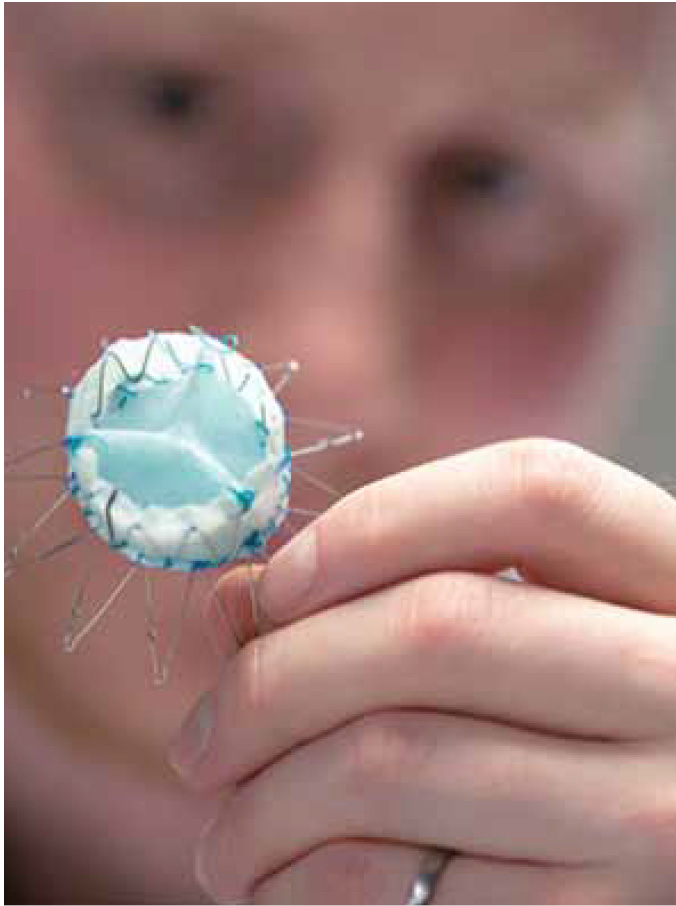UBC researchers develop heart valve aimed at high-risk patients
 |
| Nanocomposite biomaterial heart valve enables the heart to adapt faster and more seamlessly after a transplant. |
Researchers at UBC Okanagan have created the first-ever nanocomposite biomaterial heart valve developed to reduce or eliminate complications related to heart transplants. By using a newly developed technique, the researchers were able to build a more durable valve that enables the heart to adapt faster and more seamlessly. Assistant Professor Hadi Mohammadi runs the Heart Valve Performance Laboratory (HVPL) through UBC Okanagan’s School of Engineering. Lead author on the study, he says the newly developed valve is an example of a transcatheter heart valve, a promising new branch of cardiology. These valves can be inserted into a patient through small incisions rather than opening a patient’s chest. Existing transcatheter heart valves are made of animal tissues, most often the pericardium membrane from a cow’s heart. The new valve solves the problem of significant implantation risks and potential coronary obstruction and acute kidney injury by using naturally derived nanocomposites—a material assembled with a variety of very small components—including gels, vinyl, and cellulose. The combination of the new material with the noninvasive nature of transcatheter heart valves makes this new design very promising for use with high-risk patients. The combination of material, design, and construction of the valve lowers stress on the valve by as much as 40% compared to valves currently available.
Working with researchers from Kelowna General Hospital and Western University, the valve will undergo vigorous testing to perfect its material composition and design. The testing will include human heart simulators and large animal in vivo studies. If successful, the valve will then proceed to clinical patient testing.
The new design was highlighted in a paper published in the Journal of Engineering in Medicine with financial support from the Natural Sciences and Engineering Research Council of Canada.
Read the article, “Proposed percutaneous aortic valve prosthesis made of cryogel,” at https://journals.sagepub.com/doi/10.1177/0954411919837302.

